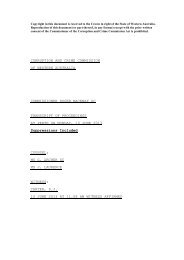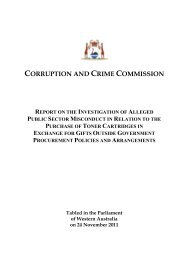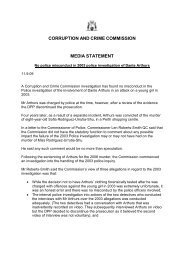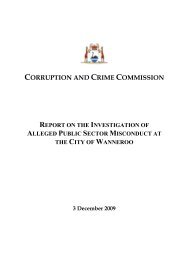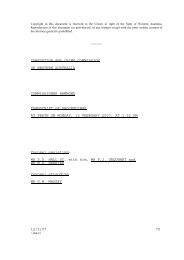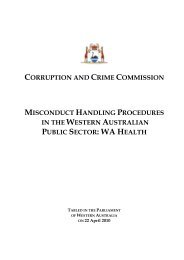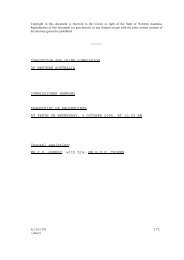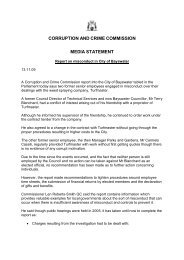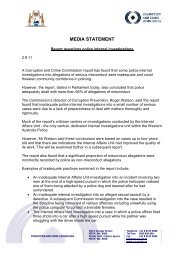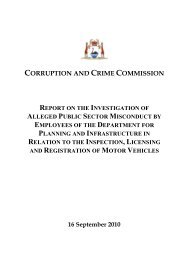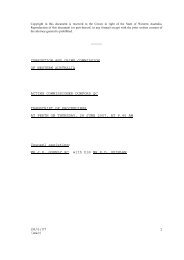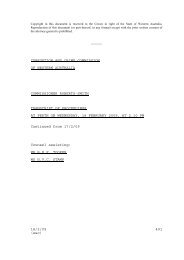Misconduct Resistance Framework - Corruption and Crime ...
Misconduct Resistance Framework - Corruption and Crime ...
Misconduct Resistance Framework - Corruption and Crime ...
Create successful ePaper yourself
Turn your PDF publications into a flip-book with our unique Google optimized e-Paper software.
hoW to use the guide<br />
You can use the guide in a number of different ways, depending on your agency’s needs <strong>and</strong> the status of your current<br />
misconduct resistance approach. For example, you can use it as:<br />
— A starting point if you are beginning to tackle misconduct resistance;<br />
— A tool for self assessment <strong>and</strong> progress monitoring if you already have misconduct resistance strategies in place; or<br />
— A tool to benchmark your agency’s performance as a whole (or individual work areas) over time, <strong>and</strong> against the<br />
performance of similar organisations.<br />
Using the guide is as easy as following these five simple steps:<br />
STEp 1: Decide which of the outcomes <strong>and</strong> key elements you need to address first.<br />
(There is no set formula for where to start – your agency’s priorities <strong>and</strong> needs should form the agenda.)<br />
STEp 2: Try to answer each focus question under the key element you have chosen. This will help<br />
you assess how comprehensive <strong>and</strong> effective your current strategies are. Not all questions may be<br />
relevant to your agency situation.<br />
After you have addressed each question, you should be able to identify gaps <strong>and</strong> areas for improvement,<br />
<strong>and</strong> reach a conclusion about your agency’s overall performance.<br />
Hesitating to readily answer a question may indicate that further review or assessment is required.<br />
(Always consider whether the focus questions adequately cover all the issues relevant to your agency.<br />
Depending on your core business <strong>and</strong> risk environment, there may be other questions that have not been<br />
included.)<br />
STEp 3: Compare your current agency performance against the corresponding Signs of Success to<br />
benchmark your progress. This will also help you decide whether specific areas of the key element<br />
require further development <strong>and</strong> what priority they should be given.<br />
(Remember, these signs are indicative only – there may be other indicators that are more relevant to your<br />
agency’s operating environment.)<br />
STEp 4: Use the ideas to Build Capacity together with your own ideas to create an action plan for<br />
dealing with the areas that have been identified as needing improvement.<br />
STEp 5: Use Steps 1 to 3 to review your progress in the areas that were targeted for improvement.<br />
NOTE:<br />
Every agency has a different level of misconduct resistance – one agency’s strategies may be more<br />
comprehensive <strong>and</strong> effective than another’s.<br />
Your agency may not need to address all of the key elements at this time. However, it is important<br />
that you periodically review your misconduct resistance approach so that you are aware of your<br />
performance against all key elements, <strong>and</strong> to ensure that you stay on the right track.



